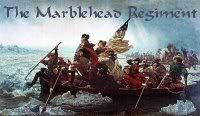Demographic Characteristics of U.S. Military Recruits Before and After 9/11
Here is an excerpt:
A few Members of Congress, motivated by American combat in the Middle East, have called for the reinstatement of a compulsory military draft. The case for coercing young citizens to join the military is supposedly based on social justice—that all should serve—and seems to be buttressed by reports of shortfalls in voluntary enlistment. In a New York Times op-ed on December 31, 2002, Representative Charles Rangel (D– NY) claimed, “A disproportionate number of the poor and members of minority groups make up the enlisted ranks of the military, while most privileged Americans are underrepresented or absent.”[1] This claim is frequently repeated by critics of the war in Iraq.[2] Aside from the logical fallacy that a draft is less offensive to justice than a voluntary policy, Rangel’s assertions about the demographic makeup of the enlisted military are not grounded in fact.The report includes all sorts of great charts and graphs, as well as explanations of them. I highly recommend having a look.
---
Representative Rangel’s theory is that if all citizens faced equal prospects of dying in a conflict, support for that conflict would have to pass a higher standard. This theory assumes that the privileged classes would be less willing to commit the nation to war if that conflict involved personal, familial, or class bloodshed. It also assumes that the existing volunteers are either ignorant or lack other options—that is, they are involuntary participants. One way to test this thesis is to explore the demographic patterns of enlisted recruits before and after the initiation of the global war on terrorism on September 11, 2001.
This paper reports the results of summary research into the demographic composition of two groups of recruits: those who enlisted between October 1998 and September 1999 and those who enlisted between January 2003 and September 2003. These groups are referred to as the 1999 and 2003 recruit cohorts, respectively. Nationwide Census data for citizens ages 18–24 were used as a baseline for comparison. Comparisons of these three different groups highlight the differences not only between the general population and military volunteers, but also between recruits who volunteered for the military before 9/11 and those who volunteered after 9/11.
Our analysis of the demographic composition of enlisted recruits vis-à-vis the general population considers the following characteristics:
-Household income,
-Level of education,
-Race/ethnicity, and
-Region/rural origin.
This paper also reviews other evidence that is at odds with the image, painted by some supporters of the draft, that the military exploits poor, ignorant, young Americans by using slick advertising that promises technical careers in the military to dupe them into trading their feeble opportunities in the private sector for a meager role as cannon fodder.
---
However, our research shows that the volunteer force is already equitable. That is, it is highly likely that reinstating the draft would erode military effectiveness, increase American fatalities, destroy personal freedom, and even produce a less socioeconomically “privileged” military in the process.
In summary, we found that, on average, 1999 recruits were more highly educated than the equivalent general population, more rural and less urban in origin, and of similar income status. We did not find evidence of minority racial exploitation (by race or by race-weighted ZIP code areas). We did find evidence of a “Southern military tradition” in that some states, notably in the South and West, provide a much higher proportion of enlisted troops by population.
The household income of recruits generally matches the income distribution of the American population. There are slightly higher proportions of recruits from the middle class and slightly lower proportions from low-income brackets. However, the proportion of high-income recruits rose to a disproportionately high level after the war on terrorism began, as did the proportion of highly educated enlistees. All of the demographic evidence that we analyzed contradicts the pro-draft case.
 I Remember
I Remember
















































<< Home